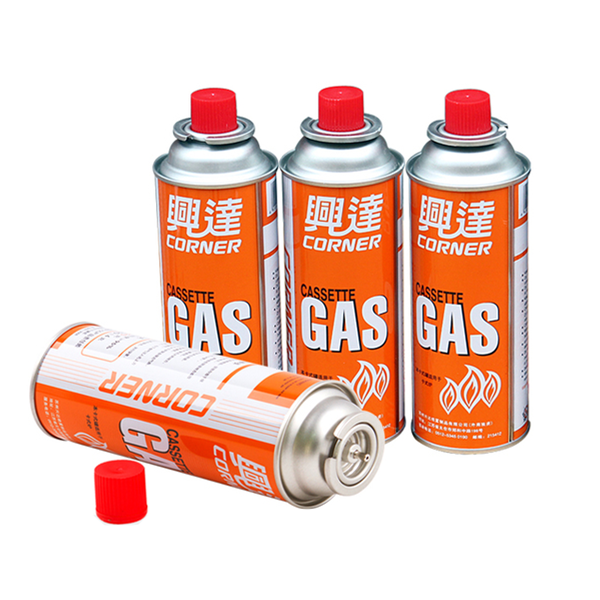There are two main scenarios where people may suspect that the gas in their ATV is bad. One is when the bike suddenly begins displaying strange, performance-related issues where the engine won’t run properly. The other is when taking the ATV out from storage after a long and harsh winter season. The ATV may not start, or you just want to make sure the gas left in the bike is still good to use.
Sometimes you can tell whether the gas is good or bad from the ATV’s symptoms when running the bike. You can also use your senses to inspect the gas to see if it shows signs of staling.
When an ATV suddenly begins displaying symptoms like difficulty starting, rough idling, or sluggishness, it may have gotten bad gas into the tank. Gas that is bad from old age smells like turpentine and becomes darker than fresh gas.
Before we take a closer look at the signs and symptoms of bad gas, it’s good to know what we mean when talking about “bad” gas or gas going bad.
While modern gas may begin to break down after only a month or two, it is still considered “good” for a long time. The gas is not regarded as bad before it causes noticeable signs of reduced engine performance.
According to NACS – a leading global fuel trading association serving as a trusted advisor to over 1,500 retailers and 1,600 supplier members from more than 50 countries, the term “bad gas” applies to fuel that won’t properly combust.
Like any other gas-powered vehicle, an ATV gets its power from a complex combustion process that requires an electric spark, compressed air, and high-quality fuel vapors to take effect.
If the spark is weak, compression is bad, or the fuel vapors for some reason do not possess the required quality, the ignition process gets interrupted, leading to poor or suboptimal engine performance.
There are several ways gas can go bad in the sense where it won’t combust properly. In ATVs, the most common is when the gas goes bad from old age or gets contamination by a foreign substance.
In ATVs, the most common is when the gas goes bad from old age or gets contamination by a foreign substance.
Gas is considered fresh produce, which can go bad over time. It’s a highly refined product made with a complex mix of many different hydrocarbons such as butane, pentane, benzene, ethylbenzene, and more.
One crucial characteristic that gasoline possesses is high volatility, which indicates how easily the fuel vaporizes. As discussed above, the combustion process requires vaporized fuel for it to burn fuel efficiently.
Over time, the lighter hydrocarbons that aid in making the gasoline highly volatile tend to evaporate, causing an imbalance in the mixture. The fuel becomes less volatile, and its ability to combust degrades until it no longer will ignite and burn properly.
While you may be able to start and run your ATV on fuel with reduced volatility, it will likely not perform as well.
While some of the lighter hydrocarbons evaporate into the air, some of the heavier hydrocarbons react with oxygen, creating new components that lead to gum and varnish deposits in the fuel lines, filters, and carburetor.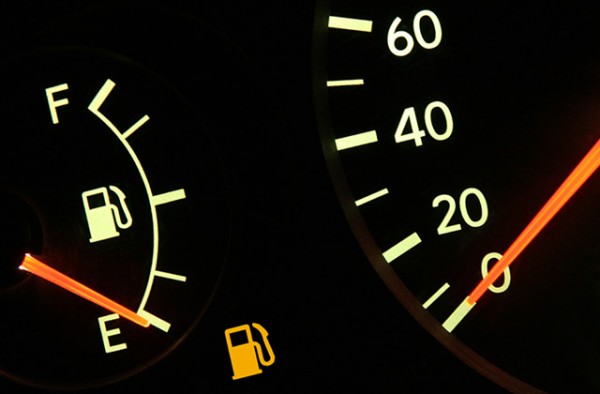
This may lead to fuel delivery issues which come on top of the poor performance caused by reduced fuel volatility.
Most of the gas sold in the USA contains Ethanol which makes up anything from 10% (E10) up to as much as 85% (E85) of the blend.
Where hydrocarbons bond with oxygen molecules, Ethanol bonds with water vapor in the air, leaving the gas contaminated with water.
Not only does water disrupt the combustion process, but it may also cause internal corrosion inside metal fuel tanks or the engine.
It’s not only from fuel that contains Ethanol, where water can get into your gas tank and engine.
A leaky gas cap can allow water into the tank from heavy rain, washing with a pressure washer, or submerging the ATV in mud or water.
Condensation inside the fuel tank from rapid temperature swings is another potential cause of water contaminating the fuel.
There is also a slight chance that the fuel you get at the gas station already has some water due to delivery or storage issues.
As you can imagine, it doesn’t matter how water gets mixed with the fuel. When this happens, the fuel is considered compromised and needs to be replaced with fresh gas.
All ATVs need fuel with a specified octane level to run properly. There’s always a chance that the tank was filled with gas of a lower octane rating intentionally or accidentally.
One scam performed by some dishonest gasoline retailers is filling regular gas in the high octane underground tank. In some cases, the retailer was honest, but the distributor ripped them off by delivering lower octane fuel than specified.
Luckily, this is not considered standard practice. You are more likely to choose the wrong handle at the pump by accident.
The final of the most common ways gas in ATVs goes bad is when it gets contaminated with dirt or small sediments from various sources.
While screens and fuel filters capture the majority of larger particles, there is a risk that the smallest particles may get through and clog fuel injectors or carburetor jets over time.
Dirt or sediment contamination can occur anywhere from the refinery, delivery truck, gas station, a storage container, or leaky gas cap.
Often, you may begin to suspect bad fuel when noticing strange symptoms and behavior when starting or riding. Symptoms of bad gas in an ATV include:
The best way to test if gas has gone bad is by using your senses.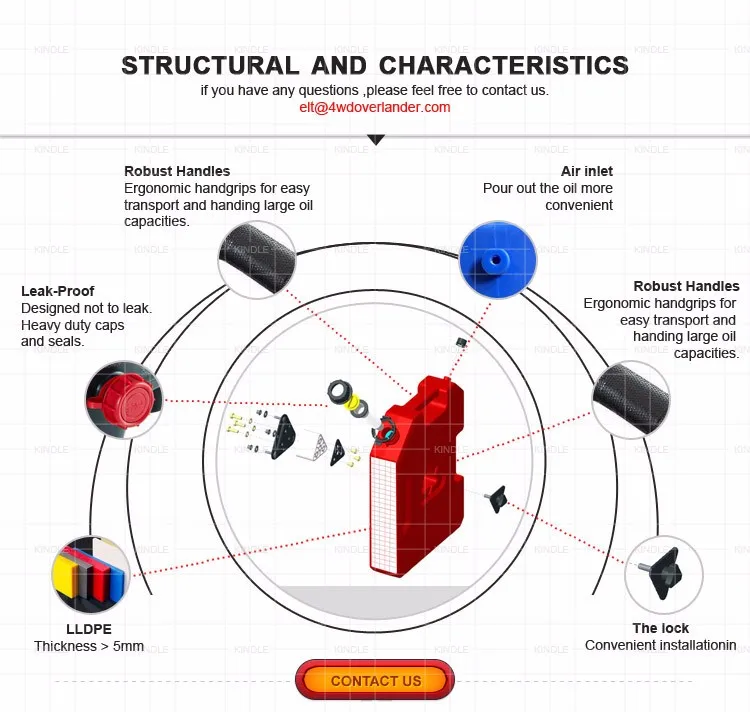
Siphon a small amount of the suspected fuel into a clean, see-through container to inspect it. Fill fresh gas into a separate container for comparison.
There is no definite rule for how long gas can be stored or left in the tank before it is no longer good.
Environmental factors such as humidity, temperature, and oxygen exposure all impact how long gas stays fresh and usable.
Also, there is no way of knowing how old the gas you bought at the pump is; it may be fresh or a month or two already.
As a rule of thumb, you’re likely better off not using gas that is older than one year.
However, gas stored in less ideal conditions can degrade quickly and may start showing signs of going bad after only a few months.
On the other hand, gas stored in the rights conditions may be good even after several years of storage.
Old or bad gas needs to be removed from the tank and replaced with fresh fuel. If the tank on your ATV has a drain plug or accessible petcock valve, simply use that to drain the tank completely.
Most modern ATVs do not, however, have an easily accessible drain plug.
In that case, use this method:
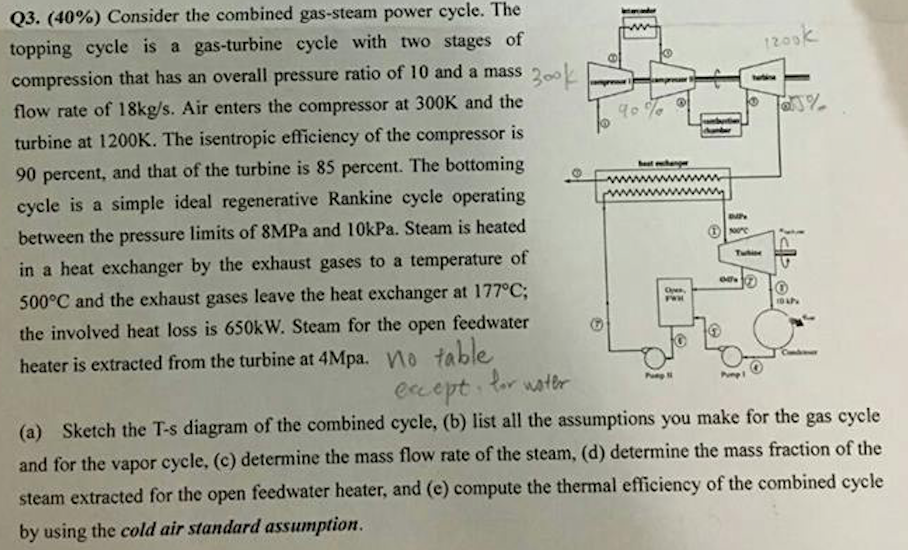 Make sure to dispose of the old gas at a recycling station.
Make sure to dispose of the old gas at a recycling station.Tip 1: On EFI bikes, you may need to run the fuel pump for a couple of seconds for the fuel to drain. Activate the pump by turning the ignition key until the pump starts, but do not turn the key all the way to “run”.
Tip 2: Another way of draining the tank is by sticking a drain hose and an air hose down into the tank to use compressed air to force the fuel out of the tank. Use rags to seal off the tank opening and gently apply air until fuel start draining out the hose and into a container. Then use a grab-it-tool and some shop rags to mop out the remaining fuel in the tank.
Tip 3: If there is only a tiny amount of bad gas in the tank, adding fresh gas and some Seafoam to clean the carb and fuel lines may be all that you need to do.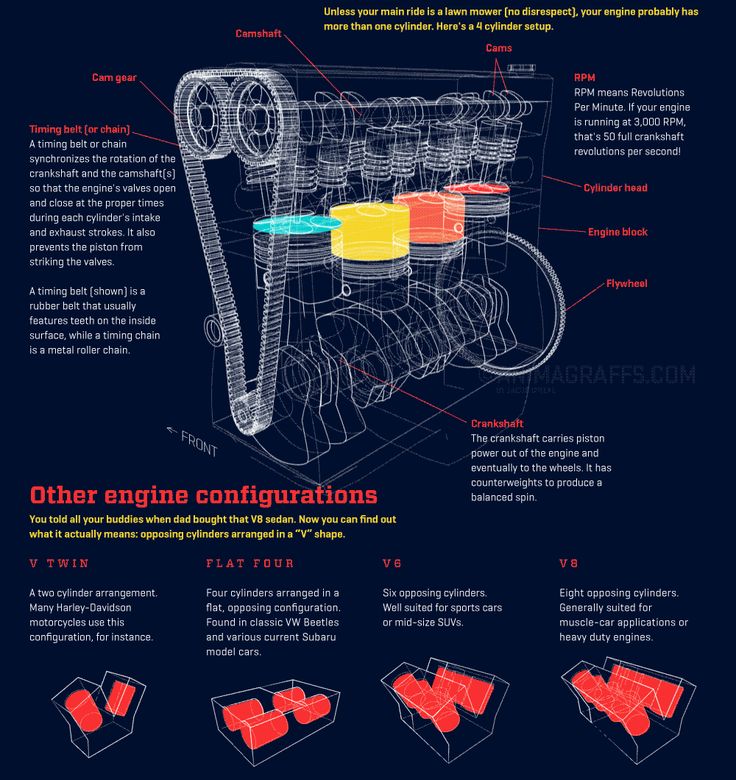 In some severe cases, you may need to disassemble and clean the carb. Pay close attention to the needle seats and clean the pilot jets. You may need to replace the needles and jets.
In some severe cases, you may need to disassemble and clean the carb. Pay close attention to the needle seats and clean the pilot jets. You may need to replace the needles and jets.
Tip 4: The fuel in the carb typically goes bad before the gas in the tank. Use starting fluid to force the ATV to burn through the relatively small amount of bad fuel in the carb and allow fresh fuel to enter.
Before putting your ATV away for the winter, make sure to add a high-quality fuel stabilizer to the tank, such as Stabil or Startron.
Note that fuel stabilizers do not revitalize gas that has already gone bad. It will only aid in keeping good gas fresh longer by slowing down hydrocarbon evaporation.
After adding the stabilizer to the tank, go for a short ride to allow treated fuel to enter the carburetor.
As gasoline is highly volatile and thereby highly flammable, it is never a good idea to store large amounts of gasoline at home.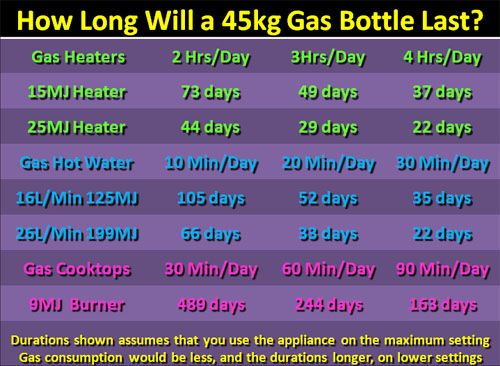 Make sure to store any gas you keep at home in a cool, low-oxygen environment, such as an airtight container designed for fuel storage kept in a cool garage.
Make sure to store any gas you keep at home in a cool, low-oxygen environment, such as an airtight container designed for fuel storage kept in a cool garage.
Whenever possible, use ethanol-free gas on any vehicle that regularly sits without being used, such as an ATV.
Alternatively, drain ethanol-based gas before storage, and use it in your car.
The gas sold in the summer is not the same as the one sold in winter. Summer gas contains heavier hydrocarbons to prevent premature evaporation, while winter gas contains lighter hydrocarbons to aid combustion through the cold winter months.
The lighter hydrocarbons in winter gas will evaporate quickly in the summer, causing the gas to go bad prematurely.
ATV Riders Forum > ATV Riders Mechanical Section > ATV Maintenance > how long can gas sit for in your tank?
PDA
View Full Version : how long can gas sit for in your tank?
cyba888
07-22-2004, 09:54 AM
any idea how long it can sit in your tank for? Mine has been sitting for 4 months with gas still inside:confused:
07-22-2004, 10:04 AM
4 months is way too long.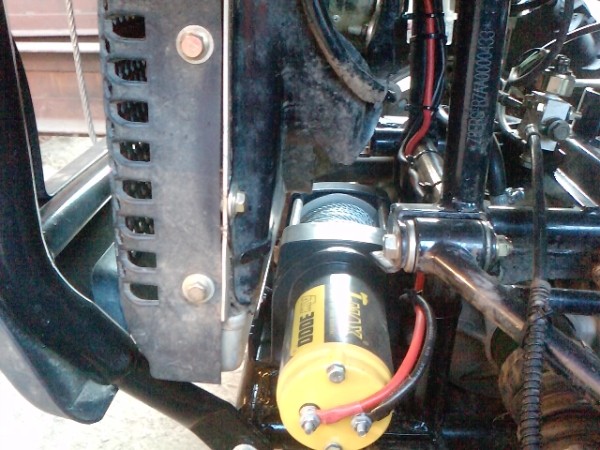 ..i change mine if its been longer then a month
..i change mine if its been longer then a month
fast4Exr
07-22-2004, 12:06 PM
my uncle rufus has a (1972) 55- gallon drum of 84 octane in his garage.it's the best gas i've ever used in my quad, i just ad a little water.........
cals400ex
07-22-2004, 02:33 PM
Originally posted by fast4Exr
my uncle rufus has a (1972) 55- gallon drum of 84 octane in his garage.it's the best gas i've ever used in my quad, i just ad a little water.........
:confused:
roostin_dale
07-22-2004, 02:47 PM
I let gas sit for about 6 months and it was ok, but I had stabilizer in it...
dsheola
07-22-2004, 04:21 PM
it should be fine... if not there's additive you can add
JDiablo
07-22-2004, 04:24 PM
Originally posted by fast4Exr
my uncle rufus has a (1972) 55- gallon drum of 84 octane in his garage.it's the best gas i've ever used in my quad, i just ad a little water. ........
........
wtf water>and yea i heard is stays longer in a metal can then plastic,but i always add this crap called stabil to all my gasoline add a lil bit to your gas tank on your quad and it will be good,not to much tho,a oz is for 5 gallons,so i just put in a couple drops
07-22-2004, 05:10 PM
add some jet fuel dude...just a couple drops
RoadkillerRyan
07-27-2004, 07:50 PM
hey why dont we just cake it off with a cherry or somthin
why yaall added water and jet fuel i doubt its going make its any better but i dont know alot
JDiablo
07-27-2004, 08:19 PM
doesn't take that much of a genious to know that you don't add water to gas:confused: :rolleyes:
XANDADA
07-28-2004, 07:37 AM
I always hear a lot of guys say that gas looses its octane or whatever after a week or two but I kinda think thats BS. I know a bunch of guys who race cars and buy a couple of 55 gallon drums of race gas at the begining of the season and use it over a six month period with no problems.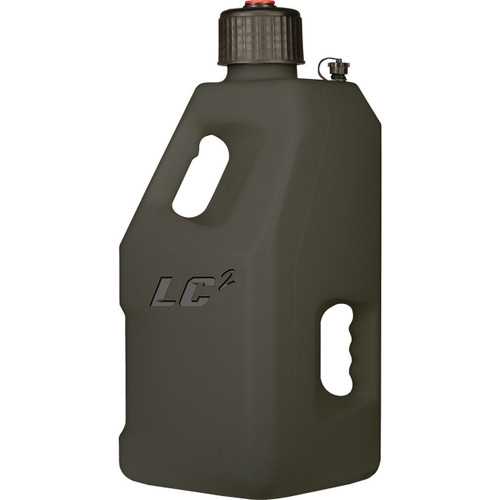 These are guys with highly modified $60,000+ full race cars. Also, next time you go to buy some race gas, ask the guy when the last time the tank in the ground was refilled. The couple times I asked the guy he said at least 6 months ago. My opinion is if its stored properly in an airtight can it will be fine for a long time. I just wouldn't leave it sitting in your quads gas tank and carb for more than a month though...JMO
These are guys with highly modified $60,000+ full race cars. Also, next time you go to buy some race gas, ask the guy when the last time the tank in the ground was refilled. The couple times I asked the guy he said at least 6 months ago. My opinion is if its stored properly in an airtight can it will be fine for a long time. I just wouldn't leave it sitting in your quads gas tank and carb for more than a month though...JMO
balls2da-wall
07-28-2004, 03:55 PM
Ive never heard of gas loosing octane...but i have heard of it loosing volticity(or some word like that), which means the ability to ignite!:p
Meeso
08-15-2004, 01:51 AM
I am looking into long-term storage for my bikes due to a possible over-seas military move, and here is some of the info I have gotten on the subject since I have been looking into it.
For plastic tanks, you should not have problems storing fuel for a long time, but use the Stabilizer (before) you let it sit.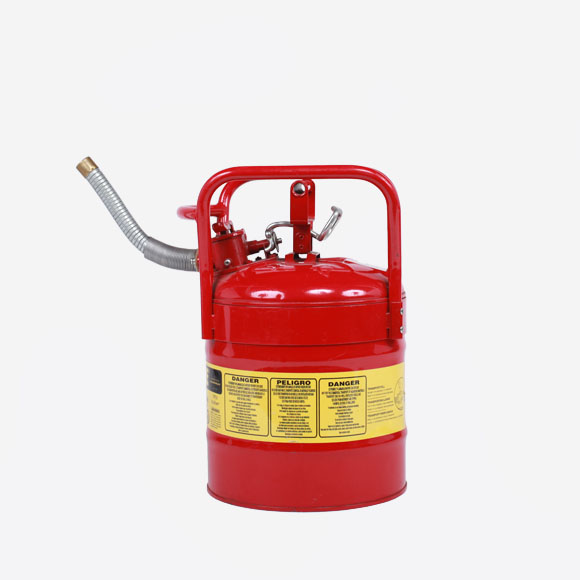 The stabilizer help the fuel from breaking down--it doesn't miraculously bring "bad gas" back from the dead.
The stabilizer help the fuel from breaking down--it doesn't miraculously bring "bad gas" back from the dead.
For Metal tanks (or the 55 gal. drum folks) the amount in the tank matters since only the top layer is probably exposed to the atmosphere, if a gallon or so goes bad it is a relatively small percent of the total......especially in terms of the Gas Station's underground tank.
If you plan to let it sit for a long time in a metal tank it is better to fill the tank as full as possible after adding the stabilizer so that condesation does not form too much on the inside of the tank when the air inside the tank cools. Otherwise you might have a problem with water in your fuel system before the gas goes bad on you.
either way, if you are only talking about a gallon or two, you might just want to bite the bullet, and drain the tank and start fresh for a better piece of mind.
Hope this helps!
JOEX
08-18-2004, 11:06 PM
Originally posted by Meeso
. ....either way, if you are only talking about a gallon or two, you might just want to bite the bullet, and drain the tank and start fresh for a better piece of mind.
....either way, if you are only talking about a gallon or two, you might just want to bite the bullet, and drain the tank and start fresh for a better piece of mind.
Hope this helps!
I think that's the best way to go, drain the carb too. Put the gas in your car and you lose nothing;)
TRX450R2
08-19-2004, 11:57 AM
Good advice Meeso:D :)
Scott-300ex
09-05-2004, 09:03 PM
i don't know if this has anything to do with anything but 2-stroke racing fuel is the best smelling stuff in the world. when we go to the park we ride at if i smell it, i follow the fool who runs it.
also, i rebuilt my grandpa's moped, gas sat in it for 7 years. i had gas that got hard, the carberator was caked with it the gas tank was hell, i pulled out solid gas, i also got a 3 inch by 1/2 inch "straw" looking thing out of the gas tank to petcock, and it was gas, and ahh man that gas smelt sooooooooooooooooo bad
TheFontMaster
09-05-2004, 09:22 PM
I'm kinda qurious about the jet fuel thing.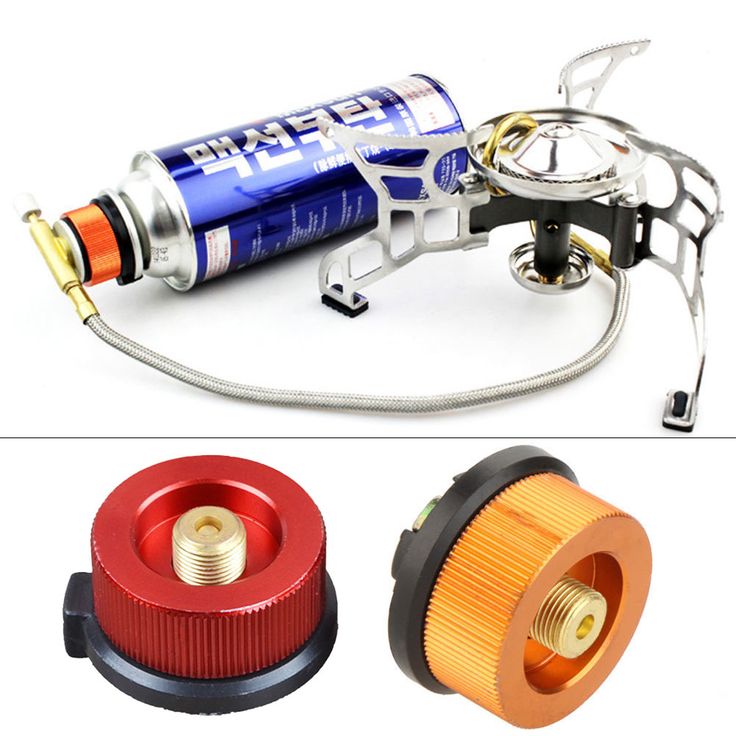
thame2010
09-09-2004, 07:15 PM
how do I EXACTLY drain my carb:confused:
JOEX
09-09-2004, 08:42 PM
Originally posted by thame2010
how do I EXACTLY drain my carb:confused:
There is a bolt on the bottom of the bowl, I think it's a 17mm.
plkmonster2
09-10-2004, 09:31 PM
There is also a flat head screw on the left side. Put a container under the hose, and unscrew it about 2 turns. Let all the gas come out. The I would take off the 17mm cap to get the last little bit out. If you just take off the cap before drainign most of it out, it creates a mess, and gets all over your arm.;) Also, make sure you turn off your gas before you start to drain. Yes, I have done it! (Geeze, how much gas does this carb hold? D'oH!)
Oh yeah, anyone heard of putting a moth ball in your tank? It was on myth busters not to long ago. They said the car was much quicker...
TheFontMaster
09-10-2004, 09:38 PM
Actualy it wasn't proven faster cause the engine wasn't in the car.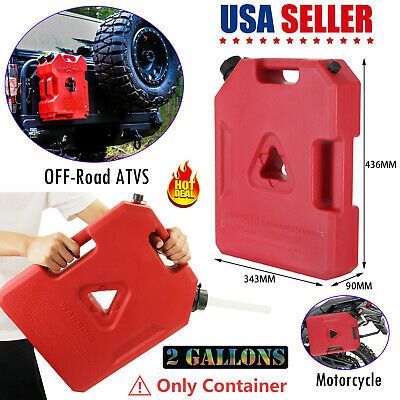 But they said that the engine sounded like it was making more power with the mothballs, almost like it raised the octaine of the gas. I wouldn't try it in your quad unles it's and old one or if your going to rebuild it soon, just in case.
But they said that the engine sounded like it was making more power with the mothballs, almost like it raised the octaine of the gas. I wouldn't try it in your quad unles it's and old one or if your going to rebuild it soon, just in case.
plkmonster2
09-10-2004, 09:44 PM
Yeah, I had no intentions of trying it. Just wanted to see if anyone has, lol. I might try it in an old quadsport.... hehe.
TheFontMaster
09-10-2004, 09:48 PM
It would be interesting to give it a try though.
plkmonster2
09-10-2004, 09:51 PM
Yeah, yeah, it would be very interesting.:) Muhaha..... I should try it sometime though... Gotta go to wal-mart! Need mothballs! lol
JOEX
09-10-2004, 11:17 PM
Originally posted by plkmonster2
Yeah, yeah, it would be very interesting.:) Muhaha..... I should try it sometime though... Gotta go to wal-mart! Need mothballs! lol
Why go to Wal-Mart? Just turn on the porch light:p
JR3
09-14-2004, 04:29 AM
people say that dry gas raises ur octane amd i heard that mothbal thing to ill try it in my moped
JR3
09-14-2004, 04:33 AM
Originally posted by Scott-300ex
i don't know if this has anything to do with anything but 2-stroke racing fuel is the best smelling stuff in the world. when we go to the park we ride at if i smell it, i follow the fool who runs it.
when we go to the park we ride at if i smell it, i follow the fool who runs it.
also, i rebuilt my grandpa's moped, gas sat in it for 7 years. i had gas that got hard, the carberator was caked with it the gas tank was hell, i pulled out solid gas, i also got a 3 inch by 1/2 inch "straw" looking thing out of the gas tank to petcock, and it was gas, and ahh man that gas smelt sooooooooooooooooo bad
2 strokes do smell good a guy on our team has a cr250 completely done by rrp bored suspension the whole 9 yards and he has to run like 113 and he mixes this oil with it man that smells good im also in a sprint car pit crew we run airplane fule in the sprint car that doesnty smell half bad either
sharkinthepool
09-14-2004, 05:37 AM
Its not the tank you need be worried about!!! You need to worry about the carb.
If it shellacs in there it can cause some major headaches!
LTZ400rider
09-14-2004, 06:16 PM
the best 2 stroke oil smell is klotz benol. u can smell that **** from a mile away. it has like bean oil in it
u can smell that **** from a mile away. it has like bean oil in it
Fortman_400
09-21-2004, 05:39 PM
ok, first things first,
gasoline breaks down its chemical form after time, due mainly to oxygen in the atmosphere.
the best way to prevent the breakdown is a stabilizer like "stabil", works great.
also a way to tell if ur gas is bad yet or not is that if it has turned bad, it should smell more like paint thinner than normal gas. Once it has done this the best thing to do is drain out all of the gas and remove it, or add it to alot of good gas yet, to thin it out.
and old gas esp. in the carb would definately tarnish some of the metal in the carb.
and about that mothball thing,, we've proved it in our lab out at school last year that yea ur engine will run great,,, for a couple of minutes,, until u blow a hole directly through ur piston!!!! its just as bad as running alot of starting fluid mixed with ur gasoline.
Scott-300ex
09-25-2004, 11:48 PM
Originally posted by JOEX
Why go to Wal-Mart? Just turn on the porch light:p
wow, i laughed hard, that was funny, and to JR3, i didn't know sprint cars ran airplane fuel, thats cool. those guys are crazy, they are on the gas the whole time and its like they get on it harder going INTO the turns when your supposed to let off, its like,..................w....o......hhhhhhhhhhh, awsome, they must have balls as big as basketballs, they're crazy
LTandRaptorider
10-08-2004, 06:50 PM
Originally posted by JOEX
Why go to Wal-Mart? Just turn on the porch light:p
and for people that say they don't like the way moth balls smell... I always wondered how they got their little legs apart! :confused:
btw joe... I took your advice, drained the gas out of my LT and put in my truck. But now it smokes like a mofo... :grr:
JOEX
10-08-2004, 08:56 PM
Originally posted by LTandRaptorider
and for people that say they don't like the way moth balls smell. .. I always wondered how they got their little legs apart! :confused:
.. I always wondered how they got their little legs apart! :confused:
btw joe... I took your advice, drained the gas out of my LT and put in my truck. But now it smokes like a mofo... :grr:
DOH!:devil:
chucked
10-10-2004, 08:16 AM
Originally posted by TheFontMaster
Actualy it wasn't proven faster cause the engine wasn't in the car. But they said that the engine sounded like it was making more power with the mothballs, almost like it raised the octaine of the gas. I wouldn't try it in your quad unles it's and old one or if your going to rebuild it soon, just in case.
time to give mythbusters a call...
plkmonster2
10-10-2004, 09:59 PM
Lol, not to break your bubble, but that is what we were talkign about, lol.
S2P
10-19-2004, 08:36 PM
I don't know if it hurts anything, but i always just turn off the gas and run it till it stops. Why mess with all those screws and get gas all over the place. Works on the quad,mower and weedwacker at the end of the summer. I just put in fresh gas in the spring.
Works on the quad,mower and weedwacker at the end of the summer. I just put in fresh gas in the spring.
Powered by vBulletin® Version 4.2.1 Copyright © 2022 vBulletin Solutions, Inc. All rights reserved.
| Children's ATV specifications Children's ATV specifications may vary significantly. Based on the parameters of the transport in question, one or another model can be recommended for children of different ages. To make it easier for you to choose a gift for your child, in this article we will try to reveal the main features of the technical characteristics of children's ATVs. Let's start by simply listing the main parameters that require special attention of the buyer while he is trying to decide on a device that he likes and can afford. So:
Now we will tell about each of the above parameters in more detail. DimensionsATVs must be sized according to the age and height of the child. If you want to purchase vehicles for growth, then make sure that at the moment the device is safe for the child: it should be comfortable for him to sit and the steering wheel should be accessible. Engine powerAs you know, the maximum speed of a vehicle depends on the engine power. When choosing the devices in question for their children, parents often look at this parameter. So, for example, if you want to buy a children's ATV for growth - an engine volume of 125 cubic meters with a power regulator can be quite suitable for children 10-15 years old. Although often models with such parameters can withstand weight up to 100 kg, which means that adults can ride such a hardy "horse". For younger children, a children's ATV 50cc or less is suitable. If you decide to buy a children's 4-stroke or two-stroke quad - do not forget to carefully study all its options. Perhaps you don’t need some of them, or, conversely, the function you need is missing, then it’s better to look for a model of a different plan. Battery capacityThe battery capacity determines how long the connected device can operate. In our case, this is an electric quad bike. Most often, this transport is purchased for children aged 2-3 to 7-9 years. Such models are no worse than their gasoline counterparts, while they even have certain advantages in the form of:
For example, children's ATVs 24v or 12 volts work up to an hour and half an hour, respectively. This time, as a rule, is quite enough for the child to roll over and want to have a snack or sleep. Our consultant can provide you with more information. Write him your question online or contact him by phone. SafetyWhichever kids ATV you choose (110-150cc or 49cubes), the safety of this device is of great importance. All because your children will ride it. When it comes to protecting children, parents tend to be very sensitive about this issue. The safety of the vehicle in question will be high if:
Some models are equipped with additional seat belts, which is quite justified at a certain age of children. Also, if the maximum speed of the device is high enough, it is often recommended to acquire helmets for children. It should also be noted that the safety of toddlers driving a battery ATV increases the presence of a remote control for parents, which at any time will allow you to stop your baby's car (however, its range is limited and, as a rule, is about 0.2 km). Quality of materialsThe quality of materials, regardless of whether you decide to buy a children's ATV for 10 or 49 cubic meters, is one of the important parameters when choosing a model of the transport in question. As a rule, well-known brands use proven raw materials and technologies during the manufacture of this vehicle. Little-known enterprises very rarely, but still, may try to reduce the cost of the final product through the use of cheaper and lower quality materials. But such a hack, as a rule, is immediately visible: the assembly is lame and individual parts seem flimsy. Conscientious companies are always ready to provide quality certificates for their products. Maximum load capacity This parameter indicates the maximum child weight at which the vehicle in question can be safely used. Why is this feature important? Because if it is neglected (the use of a quadric by a child whose weight exceeds the specified allowable maximum), various unpleasant situations are possible:
Do not remain indifferent to this characteristic so that your child does not suffer. Where can I buy children's four-wheel drive ATVs without overpaying?Children's four-wheel drive ATVs can be purchased without any hitches and overpayments at ZonaSporta. Our company offers its customers (both permanent and potential) very favorable conditions for cooperation. So, for example, in case of contacting us, the client can take advantage of the benefits listed below:
Would you like to pamper your child with a private vehicle? Then order from us a children's two-stroke or any other ATV without delay! |
Many beginners and even experienced ATV riders often ignore one important issue - the quality and brand of fuel. But the operation of many systems depends on gasoline: a carburetor, an engine, cooling, etc. Therefore, before buying a quadric, it is important to figure out which gasoline is better to fill in it.
Each ATV has its own technical features, so gasoline is selected individually for each vehicle.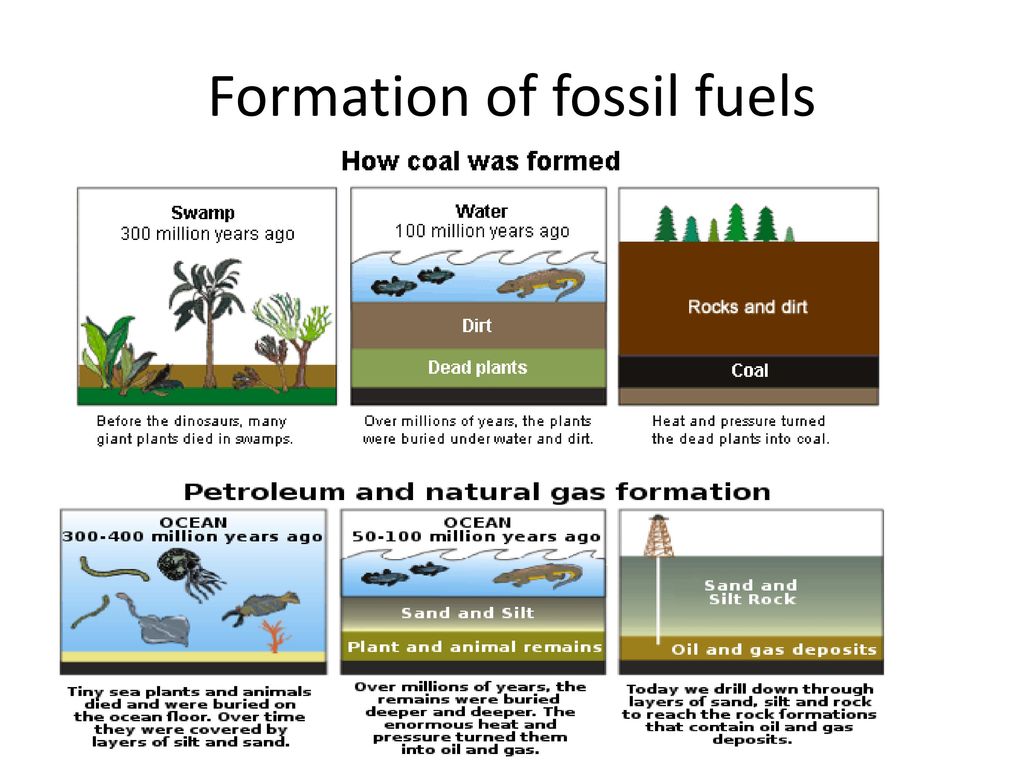 This means that if a quadric running on the A-92 pour in good 95 fuel, his systems will begin to fail, and a whole series of problems will appear.
This means that if a quadric running on the A-92 pour in good 95 fuel, his systems will begin to fail, and a whole series of problems will appear.
Using the wrong gasoline often results in:
As you can see, low-quality or unsuitable gasoline will not only increase the wear of the quadric, but also reduce its functionality. For example, the ATV will start to stall when driving up hills or will not be able to get out of the mud.
Finding the right fuel grade for your ATV is easy. To do this, the rider just needs to study the documentation for the technique. The manufacturer usually specifies the best fuel and oil to use for a particular ATV model. Also, information about the brand of gasoline can sometimes be found on the gas tank cap.
But what about the owners of old machines or used ATVs for which there is no documentation? In this case, the rider should study the experience of the owners of similar equipment. To do this, you should visit the thematic forum or find the relevant documentation on the net.
Although it is possible to choose fuel by experimental method. Simply put, a motorist will have to pour gasoline with different octane numbers into the ATV and monitor the behavior of the equipment. It is recommended to start with A-95, then move on to A-92 and A-98. It is worth noting that most vehicle owners drive exactly 95 gasoline.
But if you pick up fuel using the "poke" method, then be sure to monitor the behavior of the equipment. If you notice that the speed of the quadric has dropped, the traction has deteriorated, the engine has begun to stall or overheat, immediately drain this gasoline.
Important: If you do not know what kind of gasoline to fill in an ATV, pay attention to the brand of the equipment itself. Most Chinese devices work on A-92, but it is better to pour A-95 into Canadian or American quadrics.
Sometimes even the use of fuel with the correct octane rating does not guarantee the correct operation of the motorcycle. And it's all about the low quality of the gasoline itself. Usually this situation occurs when you refuel in an unverified place or buy fuel "from hand".
Filling with low-quality gasoline, you will notice that:
